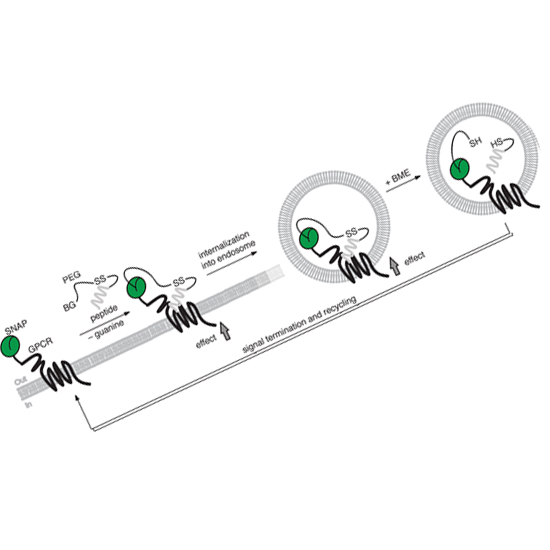Conditional and Reversible Activation of Class A and B G Protein- Coupled Receptors Using Tethered Pharmacology
16-Jan-2018
ACS Cent. Sci., Article ASAP, DOI: 10.1021/acscentsci.7b00237
ACS Cent. Sci., online article
Understanding the activation and internalization of G protein-coupled receptors (GPCRs) using conditional approaches is paramount to developing new therapeutic strategies. Here, we describe the design, synthesis, and testing of ExONatide, a benzylguanine-linked peptide agonist of the glucagon-like peptide-1 receptor (GLP-1R), a class B GPCR required for maintenance of glucose levels in humans. ExONatide covalently binds to SNAP-tagged GLP-1R-expressing cells, leading to prolonged cAMP generation, Ca2+ rises, and intracellular retention of the receptor. These effects were readily switched OFF following cleavage of the introduced disulfide bridge using the cell-permeable reducing agent beta-mercaptoethanol (BME). A similar approach could be extended to a class A GPCR using GhrelON, a benzylguanine-linked peptide agonist of the growth hormone secretagogue receptor 1a (GHS-R1a), which is involved in food intake and growth. Thus, ExONatide and GhrelON allow SNAP-tag-directed activation of class A and B GPCRs involved in gut hormone signaling in a reversible manner. This tactic, termed reductively cleavable agONist (RECON), may be useful for understanding GLP-1R and GHS-R1a function both in vitro and in vivo, with applicability across GPCRs.











